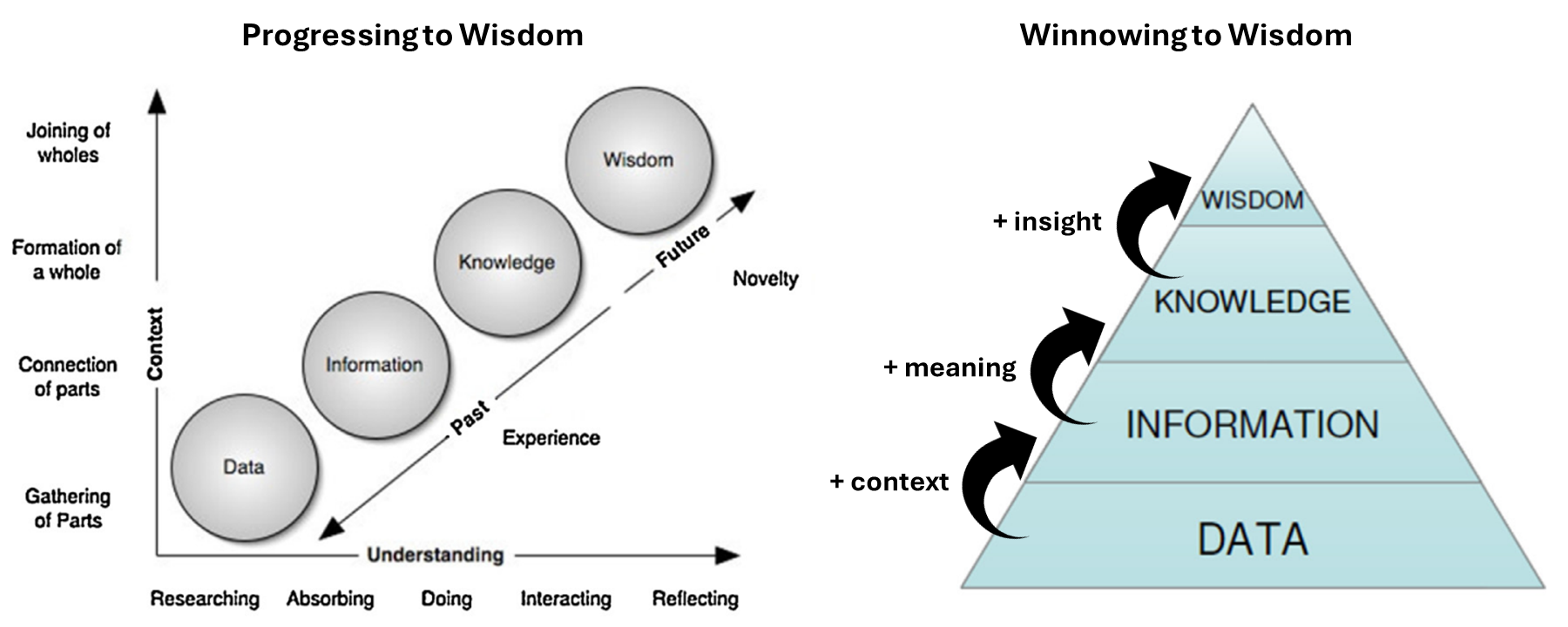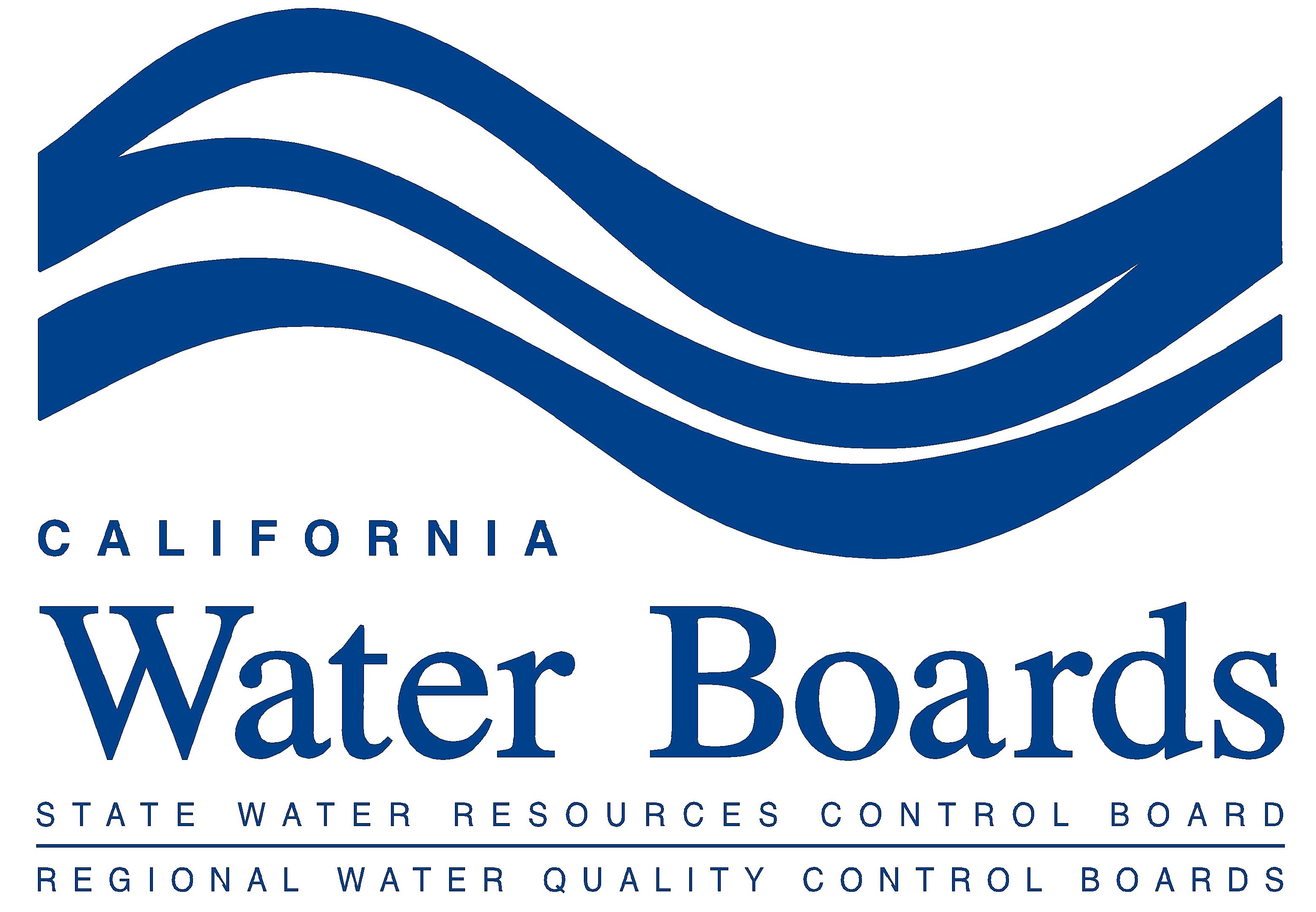Data Analysis
By now, you’ve completed all of your planning and prep and are ready to get to the analysis part of the project. Congratulations!
Ideally, the data-informed decisions we make and the corresponding actions we take will help us advance and operationalize equity. Using data to inform decisions can be challenging, and is even more so when applying an equity lens to our data work.

As the graphic above illustrates, the transition and transformation from data to wisdom requires adding context, meaning, and insight to the original data, while gaining experience and understanding as we progress. In the above graphic we define data, information, knowledge, and wisdom as:
Data: individual measurements, facts, figures, and signals, without context.
Information: organized, structured, and contextualized data that can be used to identify concepts of “who”, “what”, “where”, and “when”.
Knowledge: the result of analyzing, synthesizing, and interpreting information to identify patterns, trends, and relationships, which can be used to understand the “how” and “why” of what we’re observing.
Wisdom: the ability to integrate what we understand from the data with other context, reflection, and underlying knowledge of the broader question or topic at hand with the express purpose of making data and equity-informed decisions and to take effective and impactful action.
Data Analysis using an Equity Lens
Incorporating a racial equity lens during data analysis includes incorporating individual, community, political, and historical contexts of race to inform analysis, conclusions, and recommendations. Solely relying on statistical outputs will not necessarily lead to meaningful insights without careful consideration during the analytical process, such as ensuring data quality is sufficient and determining appropriate statistical power.
Turning data into information in the context of racial equity involves navigating complex ethical considerations. The process requires an understanding of the potential impact on Black, Indigenous, and other People of Color (BIPOC) communities and the responsibility to mitigate perpetuating or reinforcing biases. Upholding ethical standards requires a commitment to maintaining privacy, accessibility, and fostering transparency throughout the data transformation process. Additionally, acknowledging the limitations of the data and being transparent about potential biases is essential for maintaining the integrity of the data and information generated and shared. The transformation of racial equity data into meaningful information requires a thoughtful and intentional approach which we will highlight in the next sections.
For example, many programs will rely on demographic and socioeconomic data, like those collected from the U.S. Census and the American Community Survey (ACS). Because the ACS is based on a sample, rather than all housing units and people, ACS estimates have a degree of uncertainty associated with them, called sampling error. In general, the larger the sample, the smaller the level of sampling error. To help users understand the impact of sampling error on data reliability, the Census Bureau provides a “margin of error” for each published ACS estimate. The margin of error, combined with the ACS estimate, gives users a range of values within which the actual “real-world” value is likely to fall. Also see: Using American Community Survey (ACS) Data: What All Data Users Need to Know Handbook.
It is important to acknowledge this uncertainty up front to be transparent with your audience about the data and conclusions you are drawing.
Examples of how others have done this work include:
Calif. Dept. of Finance Demographic Research Unit’s California Hard-to-Count Index Interactive Map, which measures the potential inaccuracies associated with relying on census data to enumerate demographic and socioeconomic characteristics in California
Office of Environmental Health and Hazard Assessment CalEnviroScreen 4.0 Race and Equity Analysis
Data Analysis Method Considerations
There are five main data analysis method types, and each has a different process, purpose, and interpretation (see table below). As you embark on your analysis, it’s important to:
- understand which method(s) you can use given your data
- understand the limitations of your data and those method(s)
- select the method(s) that are most appropriate for your project questions/objectives
| Analysis Method | Purpose | Limitation |
|---|---|---|
| Descriptive Analytics | Summarize and describe data in clear and simple way | Descriptive analyses cannot tell us anything about why we’re seeing the results, patterns, or trends that are identified. |
| Inferential Analytics | Make (infer) conclusions or generalizations about populations based on sample data | Conclusions can only be made on samples / data that are analysed, and the appropriate use and interpretation of the statistical method used depends on whether the data meets the assumptions of the method. If method assumptions are not met - results and conclusions are meaningless. |
| Diagnostic Analytics | Tell us something about the “why” behind the results, patterns, or trends that are identified | Depending on the data you have and the analysis you are able to use, your results may not be able to identify the root cause in the context of the lived experiences of the communities the data you’re using are meant to represent. |
| Predictive Analytics | Help identify what might be likely to happen in the future given the previous trends or patterns found in the data | Your ability to predict what may happen is highly dependent on (and limited by) the quantity, quality, and representativeness of the data that you use. If there are gaps in that data you feed your analytical methods, there will be similar gaps in your results. |
| Prescriptive Analytics | Recommend actions or decisions. | The potential analytical methods are complex and require a large amount of quality and relevant data and computing power to be implemented appropriately. One should also consider the implications of the potential actions and decisions being considered using an equity lens. Striking the balance between data-driven insights and equity considerations is essential for advancing equity outcomes. |
| Causal Analytics | Understand the cause and effect relationships between variables of interest. | All causal analytical tools require strong assumptions and can never fully capture all of the context of the relationships in questions (i.e. extraneous variables that cannot be measured or assessed). If these methods are used, be sure to ground-truth the results with the communities the data you’re using are meant to represent. |
As with any analysis, we need to understand the limits of our data and the methods we use so we interpret the results we find appropriately. Appendix C proivides an overview of common data fallacies to be aware of and avoid as you’re interpreting your results and making conclusions.
Additional Resources
- College of Water Informatics Machine Learning Handbook
- Flood M. D., Lemieux V. L., Varga M., and Wong B. L. W. (2016) ‘The application of visual analytics to financial stability monitoring’, Journal of Financial Stability
- DataCamp (2023) The Data-Information-Knowledge-Wisdom Pyramid
